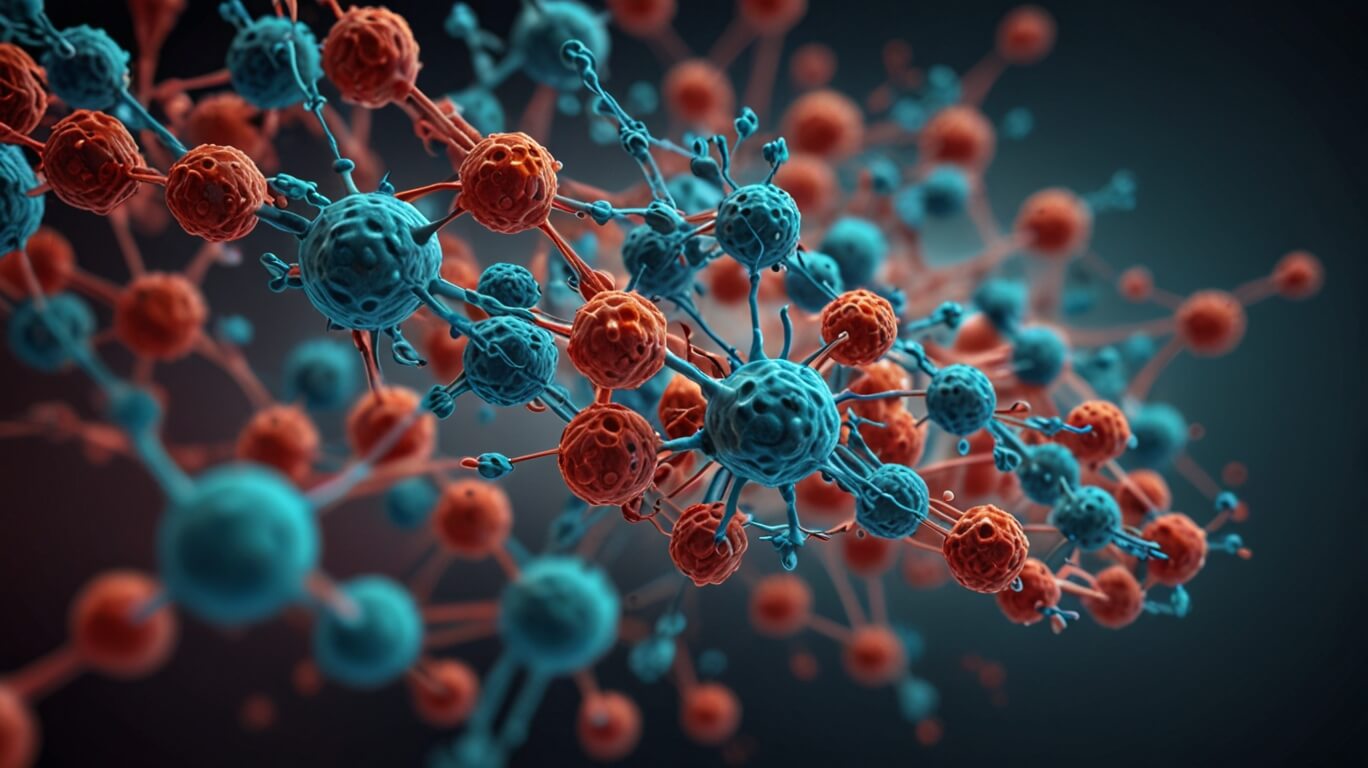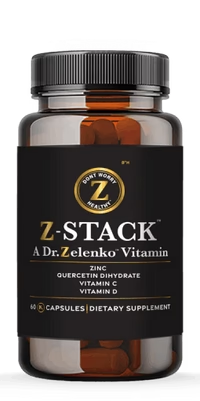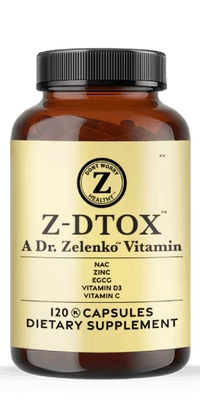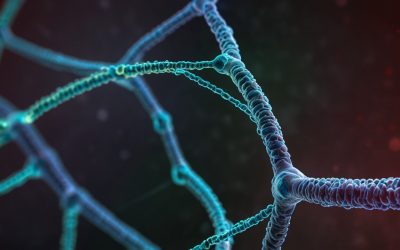In the chess game of human health, viruses are cunning opponents, constantly outmaneuvering our defenses with their rapid replication. You’re tasked with understanding the knights and rooks in this strategic battle: antiviral agents. These drugs don’t just put a band-aid on symptoms; they tackle the root of the problem by disrupting the life cycle of viruses. You’ve likely heard of some, like oseltamivir for influenza or acyclovir for herpes. But here’s the rub: viruses are masterful shape-shifters, and their ability to mutate creates a moving target. As you explore the pharmacological armory, you’ll uncover how these agents aim to outsmart the viral adversary. But what happens when the viruses evolve resistance, or when we encounter a novel virus without a tailored antiviral? Stay with this discussion to uncover the challenges and breakthroughs on the horizon of antiviral research.
Key Takeaways
- Viral replication mechanisms involve attachment, penetration, replication, assembly, and release.
- Antiviral agents can target viral replication by inhibiting DNA synthesis, preventing viral entry and uncoating, targeting viral assembly, and enhancing the immune response.
- RNA viruses have higher mutation rates and antiviral agents can target different stages of their life cycle, such as viral RNA synthesis and protease activity.
- Different types of antiviral drugs include ribavirin, amantadine, remdesivir, nitazoxanide, antiviral peptides, and small molecule antivirals.
Viral Replication Mechanisms
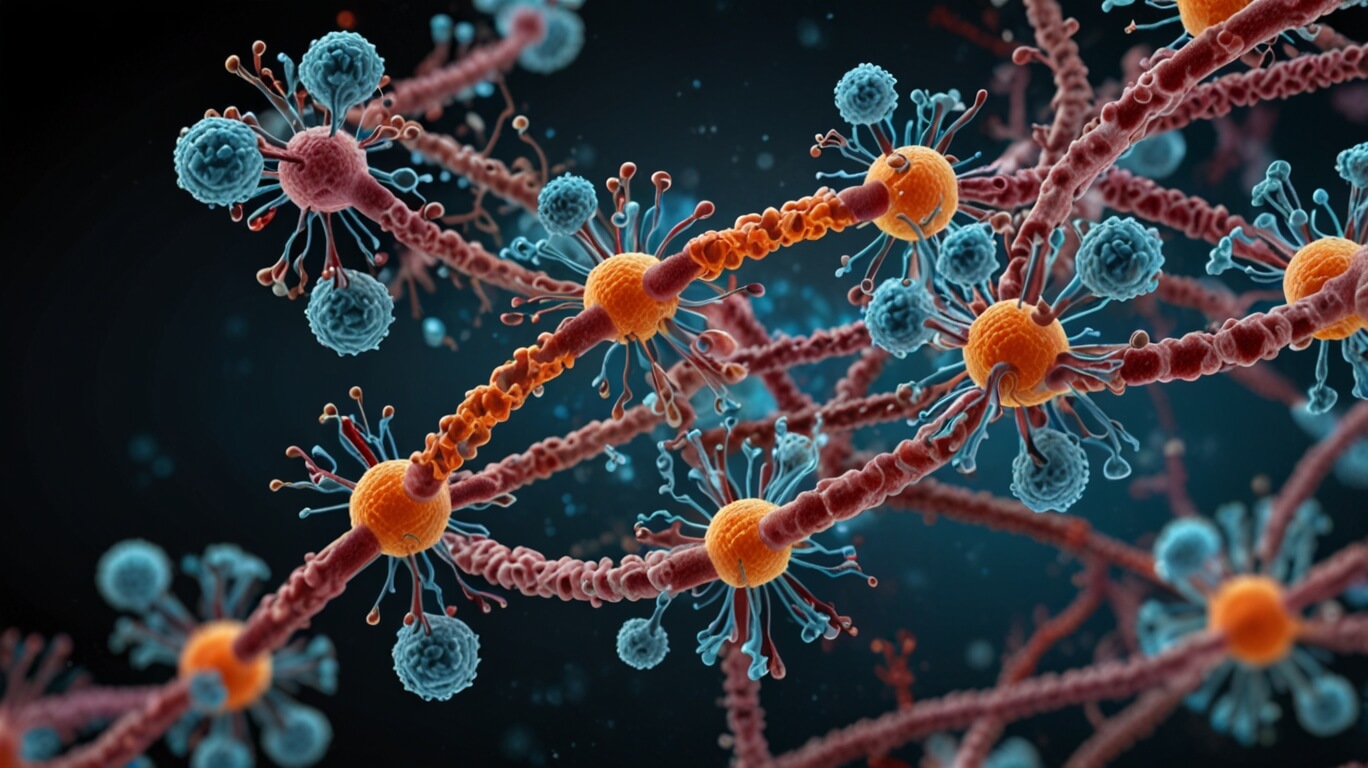
To understand how antiviral agents work, it’s essential to grasp the intricate process of viral replication, which hijacks the host’s cellular machinery to produce new virus particles. The viral replication cycle consists of key stages: attachment, penetration, replication, assembly, and release. During attachment, the virus binds to the host cell’s surface receptors. This specificity dictates the range of a virus’s potential targets and is a primary determinant in the pathogenesis of virus infections.
Once inside, the virus releases its genetic material into the host cell. DNA viruses typically utilize the host’s DNA polymerase, while RNA viruses often carry their own viral RNA polymerase to synthesize viral nucleic acid. The replication of the virus is contingent on these enzymes, making them prime drug targets for antiviral agents. For instance, acyclovir acts against herpes viruses by mimicking nucleoside building blocks, thereby inhibiting viral DNA polymerase.
In the assembly stage, new viral proteins and genetic material are packaged into nascent virions within the host cell. This step can be disrupted by antiviral drugs like protease inhibitors, which interfere with the proteins required for viral assembly. Once assembled, the virus particles are released, either by causing cell death or by budding off from the cell membrane, a process that can be targeted by antiviral drugs aiming to prevent the maturation of viral particles.
Due to viral variation, the development of antiviral drugs and vaccines remains a dynamic challenge. Nonetheless, understanding the life cycle of viruses and the mechanisms by which they replicate provides a framework for creating therapies to combat these infections. Serving those afflicted requires continuous research and refinement of antiviral drugs to keep pace with evolving viral threats.
Classes of Antiviral Agents
Antiviral agents, encompassing a diverse range of classes, target different stages of viral replication to curb the spread of infections within the body. These classes include neutralizing antibodies and recombinant soluble human receptors, which bind directly to viruses, preventing them from infecting host cells. Additionally, novel CRISPR/Cas systems have been developed to target and disrupt viral nucleic acids, hindering the virus’s ability to replicate.
You’ll find that interferons, a class of antiviral agents, boost the immune response, helping the body to fight off viral infections more effectively. Antiviral peptides disrupt the viral envelope or capsid, leading to the degradation of the virus. Nucleic acid polymers, on the other hand, interfere with the viral replication machinery, thereby reducing the viral load.
Small molecules are a broad class of antiviral agents that target various aspects of the virus life cycle, including entry into the host cell, replication, and maturation. Protease inhibitors, a subset of small molecules, block the activity of viral enzymes essential for the maturation of viral proteins, curtailing the virus’s ability to proliferate.
To enhance the efficacy and mitigate drug resistance, drug combinations are employed. These synergistic antiviral cocktails often contain lower concentrations of each agent, which can reduce potential side effects. This is particularly important in the context of ongoing efforts to develop antiviral drugs for diseases like COVID-19, where several FDA-approved drugs are under investigation in clinical trials to assess their efficacy against the virus.
Targeting DNA Viruses

Understanding the mechanisms by which DNA viruses like poxviruses and herpesviruses replicate within the host cell nucleus is crucial for developing effective antiviral drugs targeting these pathogens. These DNA viruses, grouped by family, have complex replication cycles that can be inhibited at various stages by small molecules and drug combinations that include agents with different mechanisms of action.
Here’s how antiviral drug development is advancing against DNA viruses:
- Inhibition of Viral DNA Synthesis: Drugs like acyclovir and valacyclovir specifically target and inhibit the replication of herpes simplex type viruses by interfering with viral DNA polymerase.
- Preventing Viral Entry and Uncoating: Blocking the initial stages of infection can prevent the establishment of the virus. For some DNA viruses, this involves preventing the virus from entering the nucleus.
- Assembly of New Viral Particles: By targeting the proteins involved in the assembly of new viral particles, drugs can hinder the maturation process, thereby reducing the number of infectious virions produced.
- Activation of Immune Response: Some antiviral therapies aim to enhance the host immune response to more effectively target and eliminate infected cells.
Antiviral therapies for viral diseases caused by DNA viruses must be both potent and specific to minimize damage to the host’s own DNA and cellular functions. The development of antiviral strategies often involves a combination of drugs to maximize efficacy and reduce the likelihood of resistance.
As you continue to serve those affected by viral diseases, stay informed about the latest advancements in antiviral drug development. Your knowledge and compassion are essential in the fight against these persistent and evolving pathogens.
Inhibiting RNA Viruses
In the realm of infectious disease treatment, inhibiting RNA viruses represents a critical challenge due to their rapid mutation rates and diverse replication mechanisms. As you delve into this field, it’s important to understand that RNA viruses require a host cell to replicate. This replication process is mediated by viral RNA polymerases, which lack the proofreading mechanisms found in host cells, leading to higher mutation rates.
Antiviral agents are designed to target various stages of the viral life cycle. Ribavirin, lamivudine, and amantadine are some of the drugs at your disposal, each with its unique mode of action. Ribavirin, for example, induces lethal mutagenesis, while amantadine blocks the viral M2 ion channel, preventing uncoating.
Your dedication to serving others is mirrored in the relentless pursuit of effective treatments. Despite the availability of some drugs, the arsenal against RNA viruses like influenza and measles is still limited. The COVID-19 pandemic has highlighted the urgent need for more potent antiviral drugs. Remdesivir and nitazoxanide, which target RNA virus replication, are being studied for their efficacy.
Here’s a table highlighting the emotional commitment behind the search for effective agents:
| Emotion | Response |
|---|---|
| Hope | Remdesivir’s potential in COVID-19 treatment |
| Urgency | Limited drugs for influenza and measles |
| Innovation | Diverse agents such as antiviral peptides and nucleic acid polymers |
In your quest to alleviate suffering, you’re not just looking at existing drugs but are also pioneering the discovery of novel antiviral agents. These include small molecules, peptides, and nucleic acid polymers that interfere with host factors and pathways crucial to viral replication. Your work stands at the frontier of hope and innovation, striving to inhibit RNA viruses and safeguard human health.
Novel Antiviral Developments

As we explore the latest advancements in antiviral therapy, it’s essential to note that CRISPR/Cas systems are showing promise in combating chronic and latent viral infections. These novel technologies not only expand our toolbox of antiviral agents but also refine our approach to the development of anti-viral strategies. As you delve deeper into this field, you’ll appreciate the nuanced interplay between these novel agents and the viruses they target.
Here are key developments in this rapidly evolving landscape:
- CRISPR/Cas Systems: These gene-editing tools are being harnessed to disrupt viral genomes and prevent virus replication, marking a significant leap in the treatment of viral infections.
- Recombinant Soluble Receptors: Engineered to mimic host cell receptors, these molecules bind to viruses and block their entry, exhibiting a potent mode of action with a lower risk of viral resistance.
- Antiviral Peptides: Both naturally occurring and synthetically designed peptides are under clinical development, aimed at interfering with various stages of the viral life cycle.
- Small Molecule Antivirals: These antiviral small molecules are screened for their ability to inhibit viral replication and modulate antiviral and inflammatory responses, often targeting multiple pathways to counteract viral mechanisms.
In your quest to review antiviral agents and contribute to the discovery of new antiviral solutions, it’s crucial to scrutinize these developments. They encompass not only a diverse set of modes of action but also embody a collective ambition to serve communities plagued by viral diseases. With meticulous research and clinical development, these novel agents hold the potential to revolutionize the treatment of viral infections and present a beacon of hope for those affected.
Overcoming Drug Resistance
One must consider the dynamic nature of viral evolution when developing antiviral agents, as this underpins the challenge of drug resistance. The treatment of hepatitis, particularly with the hepatitis B virus (HBV) and hepatitis C virus (HCV), illustrates the necessity of tailoring antiviral agents to the distinct mechanisms of virus replication they affect. As these viruses replicate, mutations may arise, leading to the emergence of drug-resistant strains. Hence, you’re tasked with devising strategies that can outmaneuver such adaptability.
Combination antiviral therapy has proven effective, especially in the context of influenza A and B, where it reduces the selective pressure on any single antiviral agent, thereby diminishing the odds of resistance. This multipronged approach involves using several antiviral agents that target different stages of the viral life cycle or various enzymatic functions, ensuring a more robust defense against the development of resistance.
Additionally, your commitment to serving patients demands staying abreast of cutting-edge research. Advances such as CRISPR/Cas-based therapies and antiviral peptides present novel modes of action against viruses, potentially circumventing current resistance mechanisms. By incorporating these innovative treatments, you can offer hope even when traditional antivirals falter.
Moreover, vigilance through monitoring and surveillance systems like the DrugVirus.Info database is crucial. It enables you to track the effectiveness of antiviral combinations and spot emerging resistance patterns. This information is vital for adjusting treatment protocols in real-time and ensuring optimal patient care.
Ultimately, overcoming drug resistance is an ongoing battle that requires your continuous engagement with research and development. By doing so, you ensure that the antiviral agents at your disposal remain effective weapons in the fight against viral diseases.

